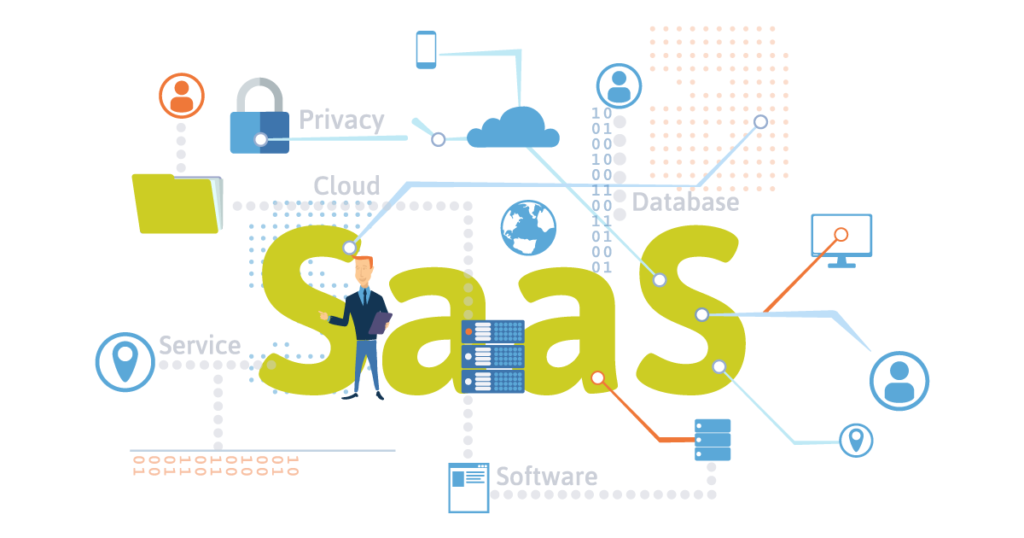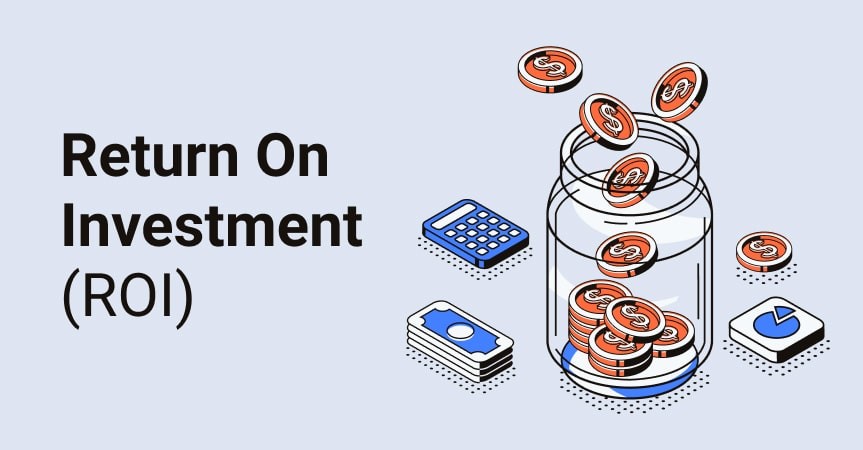Entering the realm of SaaS Market Analysis, it’s easy to feel overwhelmed by its complexity and rapid evolution. However, fear not – this sector is ripe with opportunities and holds immense potential for growth.
The SaaS sector has experienced an impressive increase in recent times. According to Gartner, global end-user spending on public cloud services is forecasted to grow 23.1% in 2023 to a total $332.3 billion, up from $270 billion in 2023.
But what does this mean for businesses?
This means that companies who are quick to adapt and invest wisely within the SaaS market can reap substantial benefits. The rise of remote work due to COVID-19 has only accelerated this trend further making
The SaaS Market: An Overview
SaaS Market Analysis: Entering the digital realm, SaaS has emerged as a significant force in business transformation, with global market size reaching USD 237.48 billion in 2023. It’s a game-changer that is reshaping business operations worldwide. In 2023 alone, the global SaaS market size was valued at USD 237.48 billion.
SaaS solutions are driving this explosive growth.
Akin to Ben Franklin’s famous quote “If you fail to plan, you plan to fail,” planning and foresight have been integral in shaping the success of SaaS providers. By offering on-demand computing services through cloud delivery models such as public cloud or private cloud systems, they’ve managed not only to solve numerous challenges associated with traditional software delivery but also scale their businesses efficiently.
In line with specific business requirements across diverse industries like financial institutions and supply chain management among others, applications ranging from enterprise resource planning (ERP), customer relationship management (CRM) tools, data centers are being offered by various leading tech companies.
Growth Projections for The Global SaaS Market Size
Fueled by increasing demand and adoption.
SaaS Market Analysis: This sector isn’t showing any signs of slowing down anytime soon. Industry experts predict that over the forecast period up until 2030, the SaaS market will experience exponential growth reaching approximately USD 908.21 billion.
Riding high on factors such as increased smartphone usage, rise in app-based services, and rapid adoption of AI & ML technologies, this projected growth can largely be attributed to large enterprises who continue seeking efficient ways to manage resources while improving overall customer experiences. Emerging markets too play crucial roles, contributing significantly towards these trends mainly because they’re increasingly adopting SaaS platforms resulting in enhanced service provision along with improved productivity levels.
Distribution Of Market Share Across Different Verticals
Talking about distribution within different verticals within this service market, a deep dive reveals interesting insights:. IT & Telecommunication sectors hold substantial shares followed closely by retail and BFSI which have quickly integrated SaaS solutions into their operational frameworks.
On another note,
Key Takeaway:
As the digital sphere evolves, SaaS is not just a buzzword but a game-changer reshaping global business operations. With its market size hitting USD 237.48 billion in 2023 and projected to reach around USD 908.21 billion by 2030, it’s clear that this industry isn’t slowing down. Thanks to on-demand cloud services
The Impact of COVID-19 on the SaaS Market
As the global pandemic unfolded, it triggered an unprecedented demand for digital transformation across various industry verticals. This sudden pivot to remote working models significantly amplified the need for Software as a Service (SaaS) solutions.
SaaS platforms emerged as efficient and economical lifelines that ensured business continuity in these challenging times. Their inherent features like flexibility, scalability, and accessibility became critical components in sustaining operations amidst lockdown protocols and social distancing guidelines.
Role of IoT and Cloud Services Amid Pandemic
In tandem with this shift towards SaaS adoption was an upsurge in Internet of Things (IoT) technologies IBM Corporation – What is IoT?, along with cloud services utilization during this period. As organizations strived to optimize processes while maintaining safety norms at home offices, they gravitated towards comprehensive digitalization strategies.
Illuminating Pathways through Digitalization:
Devices enabled by IoT technology played a crucial role here; connecting physical objects with internet capabilities allowed businesses to monitor real-time data remotely while ensuring seamless team communication from diverse locations.
Besides leveraging IoT technologies, companies also ramped up their usage of cloud services. From facilitating virtual meetings via Zoom or Microsoft Teams to managing projects using Trello or Asana – cloud-based applications have morphed into indispensable tools navigating the new normalcy post-pandemic world order.
The popularity surge witnessed by such applications signals not just temporary adjustments but potential long-term shifts within the global SaaS market itself. Indeed, adopting SaaS has evolved beyond being merely trendy—it’s now recognized as a vital strategy helping enterprises effectively weather unforeseen circumstances like pandemics.
Discover how COVID-19 amplified the need for SaaS solutions, making them vital for business continuity. With a surge in IoT and cloud services use, it’s clear digital transformation is here to stay. #SaaSGrowth #DigitalTransformationClick to Tweet
Unveiling the Future of the SaaS Industry
The SaaS market is in a constant state of flux, with the utilization of AI/ML on the rise, an increase in public and hybrid cloud implementations, data-driven analytics becoming more centralized and advances being made in telemedicine within healthcare.
Rise in Demand for Hybrid Deployment
Hybrid deployment has gained significant traction in the global SaaS market.
This model cleverly combines on-premises infrastructure with cloud services to create an adaptable IT environment that caters to specific business requirements. It provides businesses with increased control over their sensitive data while leveraging the scalability benefits offered by cloud computing.
In addition to this flexible approach towards managing resources and operations, it’s worth noting how advanced security measures have made adopting these models safer without compromising confidential information.
SaaS Merges With AI And ML Technologies
SaaS Market Analysis: A key trend shaping up in the SaaS landscape involves integrating artificial intelligence (AI) and machine learning (ML).
The increasing use cases involving application service providers incorporating AI and ML tech into software applications are becoming more prevalent due to the automation capabilities they provide, along with the ability for quick analysis of vast amounts of data.
Microsoft Azure’s Machine Learning service stands out here, providing developers with automated tools needed for building predictive models, thus saving considerable time spent coding manually. This allows companies across industry verticals to adopt these technologies seamlessly, thereby significantly enhancing customer experience.
These trends combined paint a promising picture of future growth potential, considering factors like the rising smartphone usage rate leading to the rise of app-based services, which will likely fuel further expansion within the sector going forward.
Discover the future of #SaaS. Trends like AI and ML integration, hybrid deployment, and data-driven analytics are shaping this evolving market. Dive into our comprehensive analysis for more insights. #TechTrends #CloudComputingClick to Tweet
Challenges Faced by The Global SaaS Market
SaaS Market Analysis: The global Software as a Service (SaaS) market, while teeming with potential and witnessing significant growth, is not without its share of hurdles. From data security to high implementation costs, these challenges can potentially slow down the industry’s expansion.
Data Security: A Major Concern in the SaaS Industry
In an era where businesses are heavily reliant on cloud-based services for their operations, concerns about sensitive information being exposed to cyber threats have become increasingly pronounced. This issue has been further highlighted by data breaches, which are becoming alarmingly frequent occurrences within today’s digital landscape.
Besides this, regulations such as GDPR impose stringent requirements on how companies manage user data. Failing to meet the criteria of regulations like GDPR could bring about large penalties and cause a severe hit to an organization’s reputation.
Moving beyond issues related to security, another challenge that many organizations looking at adopting SaaS solutions face is tied up with cost implications. Transitioning from traditional software models over towards cloud-based systems often requires substantial upfront investment.
Moreover, there also exist ongoing expenses associated with maintaining these systems including regular updates and ensuring system compatibility across different devices or platforms – all of which can add up over time leading onto increased financial burden.
Limited Customization Options In Many SaaS Applications
A common criticism against numerous SaaS applications pertains to their lack of customization options when compared alongside traditional software packages installed directly onto users’ machines. While some providers like Salesforce Platform Services offer customizable features within platform offerings, others may provide more rigid structures failing to meet specific business requirements and unique workflows.
This limitation poses difficulty for businesses seeking flexibility in adapting technology tools according to evolving needs and customer demands.
Key Takeaway:
Despite its immense potential, the global SaaS market grapples with hurdles like data security concerns, high implementation costs and limited customization options. Balancing these challenges is key to ensuring sustainable growth in this dynamic industry.
Regional Analysis of the Global SaaS Market
The global landscape for Software as a Service (SaaS) is diverse and ever-evolving. From the tech-forward North America to rapidly developing regions like Asia Pacific, each geographical area presents unique opportunities and challenges within this burgeoning market.
Navigating through North America’s Dominance in SaaS Adoption
SaaS Market Analysis: North America has been a leader in taking up the latest tech, which includes cloud services and software delivery models that are accessible on-demand. This region houses several large enterprises such as Amazon Web Services Inc. and Alphabet Inc., which not only use but also offer innovative SaaS solutions that have contributed significantly towards its dominant market share.
Diving into Europe’s Growing Affinity Towards Cloud-Based Solutions
In Europe, digital transformation initiatives are being adopted more widely due to advancements in data security regulations such as GDPR. European businesses are increasingly leveraging tailored SaaS applications from providers like SAP SE (), thus contributing positively towards the regional service market size.
Growth Trajectory in Asia Pacific
Moving our focus eastwards – rapid urbanization combined with government-led digitization efforts across various industries present an exciting growth prospect for the SaaS industry in APAC. This increased resilience, coupled with favorable policies supporting local entrepreneurs, indicates potential revenue-generating market opportunities within these markets. For instance, countries like India and China are promoting innovation by fostering increasing demand for app-based services, leading to higher adoption rates of software delivered via cloud-based models. These trends point towards APAC emerging as a key player driving future growth within this sector over time, considering factors like rising smartphone usage among other things.
Exploring the global SaaS market: North America leads in adoption, Europe’s affinity for cloud solutions grows, and Asia Pacific presents exciting growth prospects. Discover more. #SaaSTrends #MarketAnalysisClick to Tweet
Key Players Dominating The Global SaaS Market
The global SaaS market is a battlefield where titans clash, each with their unique offerings and strategies. These key players are not just shaping the present but also charting out future growth trajectories.
A titan in its own right, Microsoft Corporation, has made significant strides in this space. With an extensive array of cloud-based solutions including Office 365 and Azure, it has firmly planted itself as a formidable player on the SaaS stage.
In another corner stands IBM Corporation, which boasts a wide range of services from data analytics to enterprise resource planning (ERP). Their diverse portfolio caters to various business requirements across multiple industry verticals.
Salesforce Inc.: Revolutionizing Customer Experience
Making waves in customer relationship management (CRM), Salesforce Inc. offers insights that enable businesses to enhance their customer experience significantly while driving sales growth through their CRM platform.
SAP SE: Streamlining Operations Across Large Enterprises
A household name when it comes to ERP is SAP SE, whose solution helps large enterprises manage the supply chain efficiently, providing real-time visibility into operational metrics. This powerful tool provides valuable assistance for organizations striving towards seamless operations.
Cisco Systems Inc.: Enabling Seamless Collaboration
In today’s digital age characterized by remote workspaces due largely to the COVID-19 pandemic, Cisco Systems’ WebEx Meetings emerges as one reliable video conferencing solution enabling teams, regardless of geographical boundaries, to collaborate seamlessly and foster productivity within organizations.
Discover the titans of the global SaaS market. From Microsoft’s cloud-based solutions to Salesforce’s CRM platform, these key players are shaping not just today but tomorrow. #SaaSTrends #MarketAnalysisClick to Tweet
Future Outlook of the SaaS Market
The future of the SaaS market holds significant promise, fueled by several key factors. Notably, the increasing use of smartphones and a surge in app-based services have revolutionized business operations.
Smartphone ownership has become a ubiquitous part of modern life, with the Pew Research Center reporting that over 80% of Americans now possess one. As per the Pew Research Center, over 80% of Americans now own a smartphone, and this number consistently grows on a global scale. This widespread adoption has opened new doors for SaaS providers to deliver mobile-centric solutions that cater to specific business requirements.
Beyond just smartphones, there is also a rise in app-based services across various industries, from food delivery and ride-hailing to financial institutions and healthcare. These apps heavily rely on cloud software platforms provided by SaaS companies, thereby boosting demand even further.
Adoption of AI & ML Across Industries
The integration of artificial intelligence (AI) and machine learning (ML) technologies into business processes is playing a pivotal role in shaping the future outlook of the SaaS industry.
These advanced tools automate tasks, improve customer experience, drive innovation, among other benefits, making them attractive options for organizations looking to adopt SaaS as part of their digital transformation initiatives.
While there are challenges such as security concerns and sensitive data, high implementation costs associated with transitioning platforms, optimism remains about the continued growth of the sector. This growth is driven largely by ongoing advancements in technology and the increased resilience and agility brought forth through the utilization of these systems.
In spite of potential impediments, it is evident that SaaS will remain a significant factor in reconfiguring how we go about our daily activities for the near future.
Explore the future of the SaaS market. Fueled by smartphone use, app-based services and AI integration, this sector is set to reshape our daily affairs. #SaaSGrowth #DigitalTransformationClick to Tweet
Conclusion
The SaaS Market Analysis has revealed a dynamic and rapidly evolving industry.
From its impressive growth trajectory to the profound impact of COVID-19, we’ve explored every facet.
We’ve seen how trends like AI integration and hybrid deployment are shaping the future landscape.
And yet, challenges persist – data security concerns, high costs of implementation remain significant hurdles.
Regionally, North America leads while Asia Pacific shows promising potential for exponential growth.
Major players like Microsoft Corporation and Salesforce Inc. dominate, but there’s room for newcomers too.
In conclusion, the SaaS market is poised for continued expansion with the rise in smartphone usage and increased adoption of app-based services propelling it forward.
If you want to learn more about this, sign up for my newsletter.


